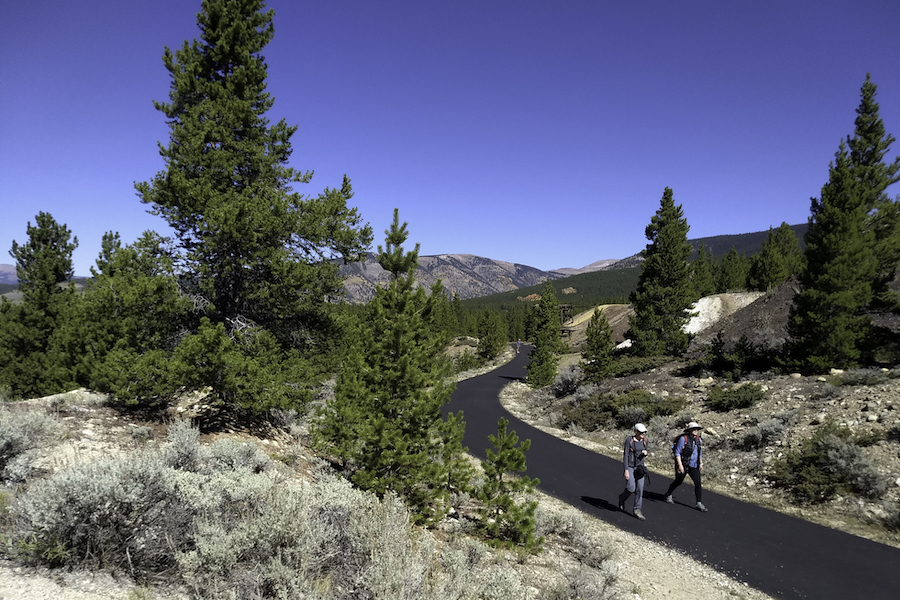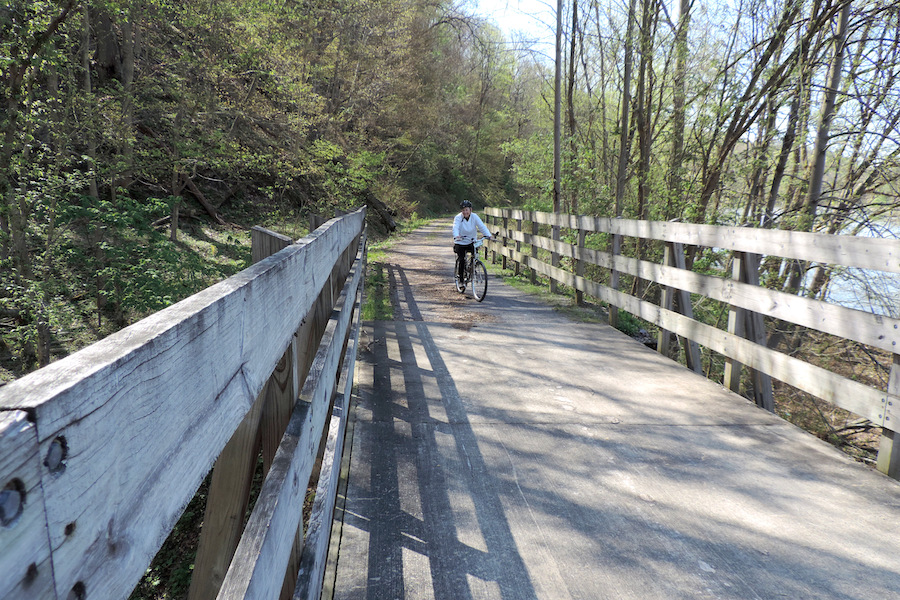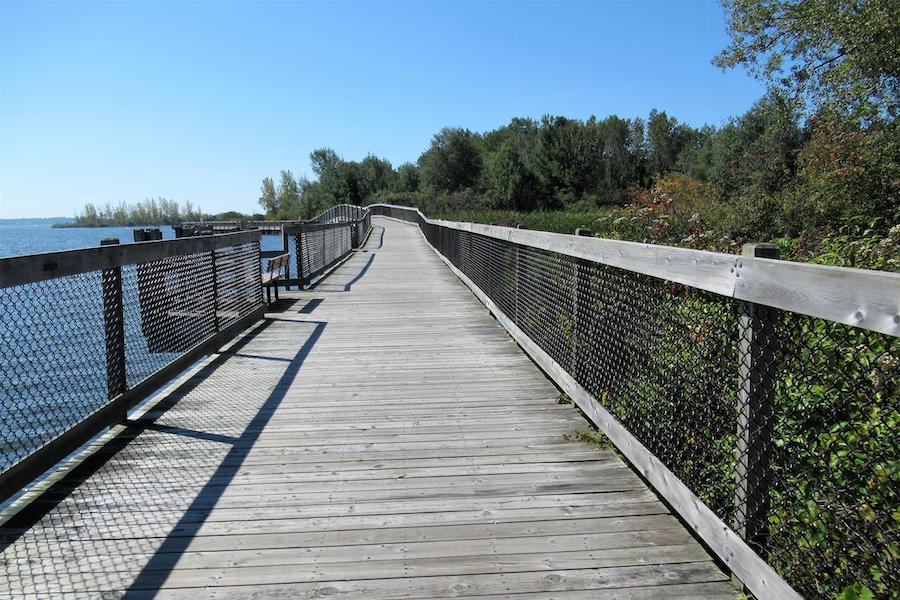Four Rail-Trails That Are Part of Transformative Environmental Clean-up Projects

In honor of Earth Day’s 50th Anniversary this year, Rails to Trails magazine is highlighting four rail-trails that have had a transformative Cinderella story, going from industrial dumping grounds to beloved community assets. Largely powered by citizen activism, the environmental recovery of these tarnished areas has given them new life as valuable transportation corridors, flourishing habitat for wildlife and scenic places for recreation.
New Hampshire and Massachusetts
Nashua River Rail Trail

The Nashua River Rail Trail is tucked under a delightful canopy of maples, oaks, beeches and birches as it journeys 12 miles through a handful of quaint towns northwest of Boston. Within this scenic backdrop, there’s plentiful wildlife to be seen, including bald eagles, owls, deer, turkeys and even swans, which sometimes grace the river. On its northern end, the trail dips its toe into New Hampshire with a mile-long section that terminates at a picturesque pond framed by trees.
In this pristine setting, it’s almost unfathomable that the river, which much of the pathway parallels, was used as a dumping ground for decades. The industrial waste from the paper mills and plastic factories along the riverbank once turned its waters psychedelic colors before a strong grassroots movement pushed for the river’s recovery. The efforts of local citizen activists pushed lawmakers to enact the Massachusetts Clean Water Act in 1965, becoming the first state in the country to pass clean water legislation.
Don’t Miss: At the trail’s southern end in Ayer, an MBTA station (mbta.com) serves a commuter rail line that runs to Boston, so travelers can enjoy both the beautiful natural settings of the trail and all the amenities and attractions of the big city.
Colorado
Mineral Belt Trail

Forming a nearly 12-mile loop around Colorado’s 2-mile-high-city of Leadville, the Mineral Belt Trail offers spectacular views around every bend: the dramatic Rocky Mountains, sagebrush meadows and passage through the city’s Historic Mining District. Beginning north of downtown, a clockwise circuit on the paved pathway quickly spirits travelers into the evergreens on a gentle climb to 10,600 feet around mile marker 5, before dropping down to 9,900 feet by trail’s end. Many historical relics from the area’s mining past—such as an old mining tower, ore carts, a mine chute and other aged equipment—have been placed along the route to serve as an outdoor museum.
Due to contamination from its mining and smelting era, the California Gulch and the surrounding area, including Leadville itself, were listed as a Superfund Site by the Environmental Protection Agency (EPA) in 1983. Sparked by citizen advocacy, the idea for the Mineral Belt Trail was born. The rail-trail not only served to cap the contaminated soil under layers of gravel and asphalt, but also provided the opportunity for economic revitalization from tourism.
Don’t Miss: History buffs should take a ride on the Leadville, Colorado & Southern Railroad (leadville-train.com), a sight-seeing train that departs from the depot in town and journeys into the wilderness while the conductor spins tales about the town’s colorful history.
West Virginia
Mon River Trail System

“Wild and Wonderful” is West Virginia’s slogan, but the same could be said of the Mon River Trail System in the north-central part of the state. The scenic route is part of an interconnected rail-trail network of nearly 50 miles spiraling out of Morgantown. On its northern end, the Mon River Trail comes down from the Pennsylvania state line, skirting the Mon River (short for Monongahela), through lushly forested terrain. After 6 miles, the compacted-stone pathway seamlessly blends with the paved Caperton Trail, which leads travelers into the heart of the vibrant college town.
Near mile 4, trail users will travel past the Van Voorhis Trailhead, which utilizes a former brownfield site for its parking lot. The property, once home to a long-disused Quality Glass manufacturing facility, has been beautifully transformed into a popular community asset with plentiful amenities, including a bike fix-it station, benches and a kayak launch.
Don’t Miss: At the Pennsylvania border, the Mon River Trail System meets the Sheepskin Rail-Trail, which heads into Point Marion. Eventually, this developing rail-trail will span 34 miles, providing a connection to the famed Great Allegheny Passage (gaptrail.org).
The Mon River Trail system is a key component of the developing, 1,500-mile Industrial Heartland Trails Coalition (ihearttrails.org) trail network in Pennsylvania, West Virginia, Ohio and New York.
Michigan
Muskegon Lakeshore Trail

The Muskegon Lakeshore Trail offers a two-for-one experience on Michigan’s western shoreline: the 11-mile rail-trail provides scenic views of both Muskegon Lake and the vast Lake Michigan. Not to be outdone by its water views, the paved pathway also affords access to several of Muskegon’s popular parks, as well as nature preserves, historical landmarks, restaurants and other attractions.
Muskegon Lake was not always a tourist draw; it was once lined with dozens of sawmills and foundries, which polluted the lake and its surroundings. In 1985, the EPA designated the lake an Area of Concern due to its environmental contaminants. A decades-long collaborative effort between community groups, governmental agencies and other organizations followed, gradually restoring the lake as a habitat for fish and wildlife, improving the appearance of the lakeshore and providing access to the waterfront via the trail.
LEARN MORE
Don’t Miss: The rail-trail provides access to Pere Marquette Park, which hugs the shoreline of Lake Michigan, one of the country’s five Great Lakes. Be sure to check out the park’s sandy beach and views of two lighthouses (muskegonlights.org) listed on the National Register of Historic Places.
This article was originally published in the Spring-Summer 2020 issue of Rails to Trails magazine. It has been reposted here in an edited format.

Donate
Everyone deserves access to safe ways to walk, bike, and be active outdoors.
